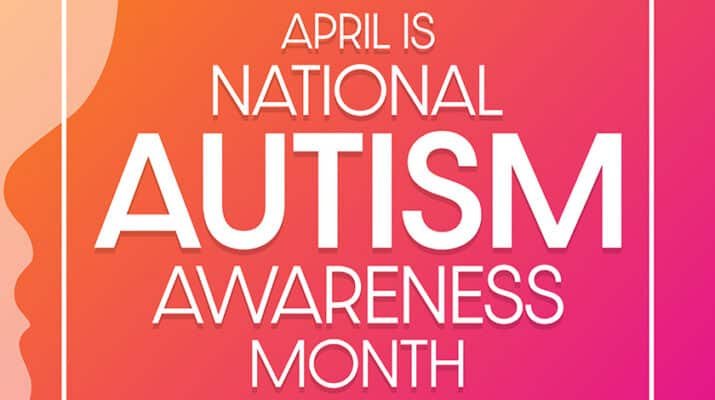By Deborah Jeanne Sergeant
Children on the autism spectrum often struggle with social skills, academics, communication and other activities of daily living in varying degrees. Applied behavior analysis is a kind of therapy that uses observation, recordkeeping and positive reinforcement to find what triggers unwanted behaviors and what promotes desired behaviors.
Its goal is to help children achieve their potential for independence.
Psychologist Ole Ivar Lovaas developed ABA in the 1960s, based upon behaviorism. ABA doesn’t “cure” autism but helps children with autism better understand the rules and expectations of a world that oftentimes seems inconsistent, incoherent and frustrating to them. Caregivers and teachers at school and parents use ABA to help understand how to best support their children’s development.
Although early versions of ABA included negative reinforcement for unwanted behavior, the current version of ABA uses positive reinforcement to help foster desired behavior. ABA has garnered criticism for its intention to force children on the spectrum to behave in ways socially and academically acceptable rather than to consider autism an example of neurodiversity.
For some people, behaviors manifested by their autistic neurodiversity may hinder their ability to act upon and interact in their environment. That’s where ABA can prove helpful.

“Applied behavior analysis is a well-documented, evidence-based practice that teaches skills critical for maximizing a person’s independence,” said Marcus Thomeer, licensed psychologist and professor at Canisius College Institute for Autism Research.
For autistic individuals who are having trouble in their social/social-communication and adaptive functioning, it is critical to identify skills that are needed to meet academic, adaptive, social or emotional demands of their environments. An ABA approach breaks down skills needed into its component steps and then teaches one step at a time. As the individual masters one step then each subsequent step is added and taught until mastery is achieved for completing the entire skill.
“It’s not about changing who a person is, but rather building skills that help them navigate the social environment,” Thomeer said.
One of the criticisms of ABA approach in working with autistic children is that it fails to follow the child’s lead.
“In an ABA approach, the adult directs the instruction so that the child can acquire necessary skills to meet the demands of the child’s home and school environments,” Thomeer said. “As the child acquires the skills needed, an ABA approach works toward fading out their prompts and cues so that the autistic child initiates and functions as independently as possible for the specific child. Again, the goal is to maximize the child’s potential and level of independence. If a child were able to meet the demands of the environment they are faced with, then we would not have to provide instruction. For some children with limited cognitive and language abilities, we want to help build skills that enhance their lives.”
Typical children also must learn to follow directions, converse and abide by rules.
Autistic children are different because these social nuances and rules are not as intuitive or as easily learned. But they can learn with a few different strategies and tools.
Discovering the patterns of cause-and-effect aid parents in developing strategies that work. For example, if lunch is late on the days a child has a meltdown, it’s apparent that it’s tough for the child to cope while hungry. Scheduling lunch earlier or serving a larger breakfast may represent ways to prevent the meltdown.
“ABA, when following protocols, is a good way to teach children with autism spectrum disorder discrete skills in controlled surroundings,” said Amy Nwora, Ph.D., and director of health professions education at D’Youville College. “Utilizing repetition and planned rewards allows many children to master each component of a skill, building to a larger task.
“Documentation in ABA clearly denotes any and all progress toward the prescribed outcome and ABA researchers are able to use this documentation for a strong research foundation that aids in evidence-based practice. Having documented proof in the form of peer-reviewed research is important both from a buy-in and a reimbursement standpoint.”
Although helpful, the data collection and strategy implementation for ABA can be time-consuming. Nwora said that this aspect can make it hard to use other effective strategies and techniques, like those that focus on sensory processing and occupational development.
“Additionally, because of the individualized presentation of ASD in children, ABA may not be effective for all children on the spectrum,” Nwora said. “No one treatment fits all and children with ASD often benefit from a variety of treatments that can be limited when multiple hours per day are dedicated to ABA.”
One of the criticisms of ABA is that it includes a reward system typically related to favorite foods — not the type of reward a lot of parents want to give.
“Rewards help us establish importance to something a young child doesn’t think is important,” said Kathy Ralabate Doody, Ph.D., associate professor, associate chairwoman of graduate programs and coordinator of the Early Childhood Students with Disabilities Program at SUNY Buffalo. “It’s a token economy system. When you give someone something small relatively meaningless like a penny, check mark or sticker or mark with a bingo dauber on a chart, it’s like currency such as when you get 10, you can cash it in for a prize. We use that all the time. Schools even with children who are not on the spectrum use this.”
The difference is that autistic kids may receive this type of motivation for other skills that come easier to neurotypical children and their rewards may be for shorter term goals.
Another criticism of ABA is that the data collection can be laborious. Doody said that using phone apps or even paper on a clipboard-bound chart helps. The key is paying attention to the details in the environment so the therapist notices what preceded the behavior.
“Once we establish why it’s occurring, we can decrease or increase the behavior, depending upon what’s appropriate,” Doody said.

